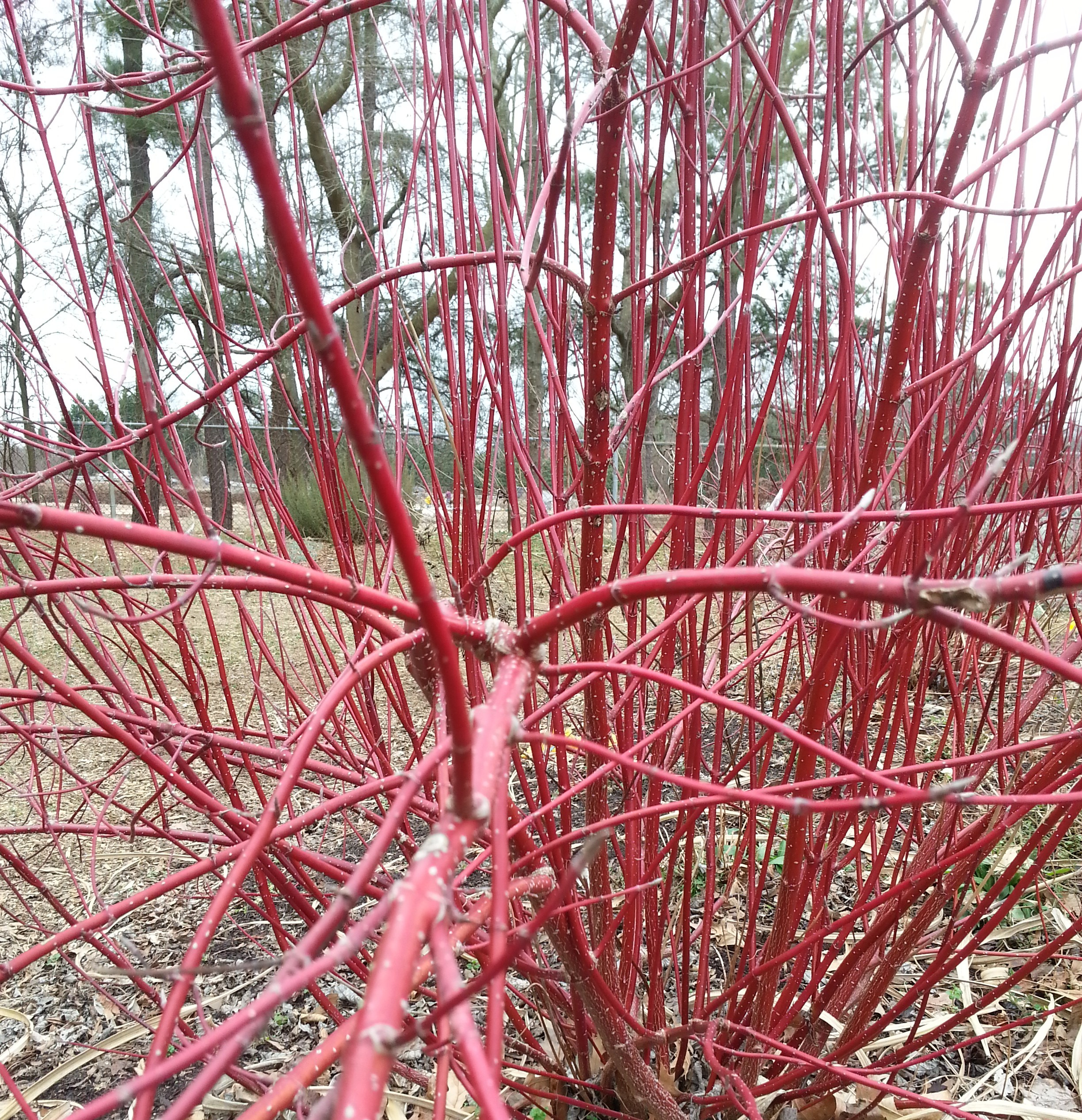Usually, when people think of “dogwoods”, they think of the eastern flowering dogwood (Cornus florida), a small, native, understory tree with showy white or pink blooms in the spring. But did you know there are lots of different kinds of dogwoods, including both trees and shrubs? This morning, our crews were trained in identification and maintenance of red-twig dogwoods (Cornus sericea), which are beautiful shrubs with brilliant red stems that look absolutely stunning in the winter–especially in the snow! The stems can also be cut and used in holiday floral arrangements.
 A winter landscape at JC Raulston Arboretum: Red-twig dogwoods in the foreground with maidengrasses and pine trees in the background.
A winter landscape at JC Raulston Arboretum: Red-twig dogwoods in the foreground with maidengrasses and pine trees in the background.
Red-twig dogwoods, also known as red-osier dogwoods, are native to most of Canada and the western and northern regions of the United States. They are shrubs that truly have 4 seasons of interest. In the spring, they leaf out with fresh green foliage; in early summer, they bloom with clusters of tiny white flowers that mature into red berries; in fall, the leaves develop a deep, purplish-red color; and in winter, the leaves drop to reveal the brilliant red stems. They can grow up to 9 feet tall and wide if left natural, but typically a rejuvenation pruning schedule is followed to retain the bright red young stems (more on this below). They tolerate sun to part-shade and wet to dry soils, support many species of local insects and wildlife.
Maintenance
Red-twig dogwoods are pretty low-maintenance shrubs. In natural areas where size is not an issue, they can be left to their own devices. However, as the stems mature, they will lose the intensity of the red color, and will eventually turn gray after a few years. So, periodically, the old stems need to be pruned out. Ideally this would be done once per year in the winter, and the oldest stems that are starting to lose their color would be pruned all the way to the ground. Be careful not to prune new shrubs that have been planted within the last year, and don’t remove more than 1/3 of the total stalks in one year.
ID Tips
- The bright red stems are pretty good indicator that a shrub is a red-twig dogwood (or closely related species).
- The stems will have light tan “lenticels”, which are small, corky bumps or lines on plant stems or trunks that allow gases to interchange between the air and the interior plant cells.
- The leaf shape and venation (vein pattern) are similar to eastern flowering dogwood, although the leaf may feel thicker and tougher.
- The flower clusters are white, and each floret (tiny flower) has 4 petals and a reddish center.
- In late summer, the flower clusters will develop into clusters of red berries, which will persist through the fall.
 Notice the pattern of light tan dots (called “lenticels”) covering the stems.
Notice the pattern of light tan dots (called “lenticels”) covering the stems.